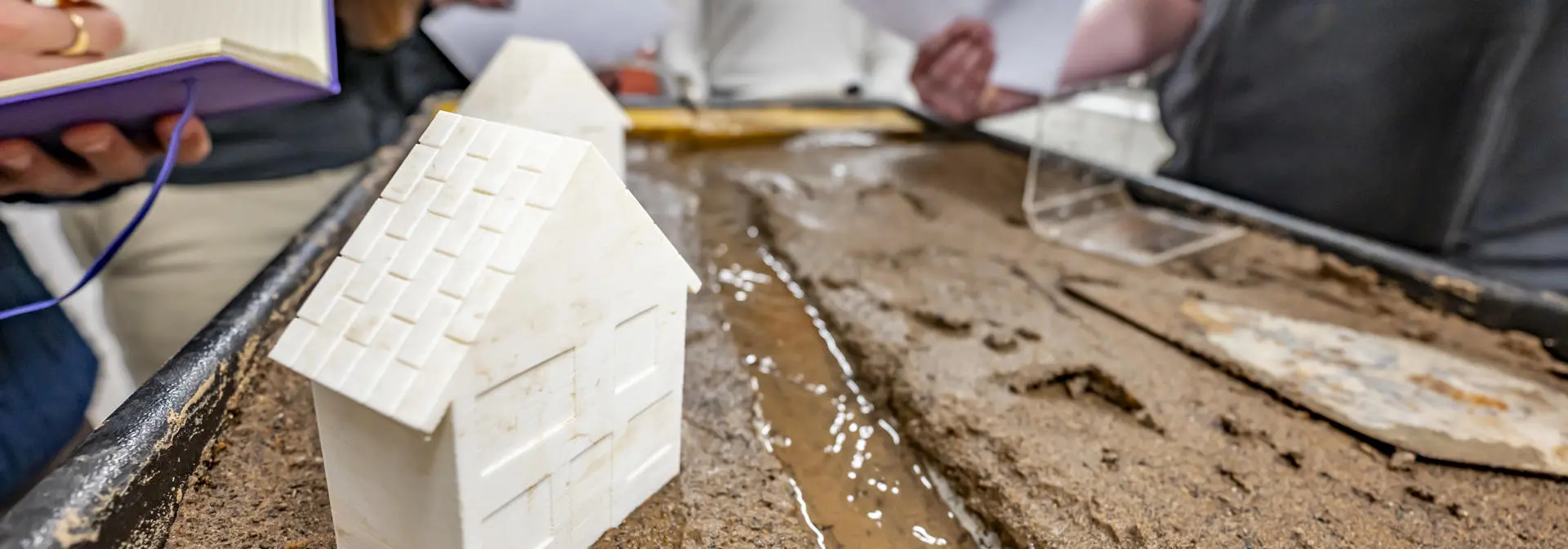Key information
- School
- Energy, Geoscience, Infrastructure and Society
- Location
- Edinburgh
- Delivery type
- Full-time, Part-time
- Supervisor
- Lynne Jack
- Start date
- September
Drainage research at Heriot-Watt University has an international reputation based upon its numerical modelling of the water and entrained airflows within building drainage and ventilation systems and its contribution to both industrial product development and national legislation in the area of building drainage design and water conservation.
The team's findings have been the basis of major UK water conservation legislation and industrial projects to aid drainage design for low water use and economic vent system provision. Researchers are also active in numerical modelling of conventional and siphonic rainwater systems and more recently, in assessing the impact of climate change on these systems.
September 2024 entry
The deadline for applications from UK students is 30 August 2024. For EU and overseas applicants, we guarantee to consider applications submitted by 2 August 2024.
Research projects
Air pressure in building drainage systems
Based on extensive site and laboratory investigations, the academics have undertaken a fundamental re-assessment of the mechanisms determining air pressure transient propagation within building drainage vent systems leading to comprehensive system simulations.
Propagation of positive transients within building drainage networks has been a source of concern for decades, and the group were responsible for the invention and development of a Positive Air Pressure Attenuator in conjunction with Studor Ltd. This device acts to absorb positive air pressure transients between their source and any branch connections where trap seals may be lost as a result of positive air pressure.
In addition, the team is responsible, through EPSRC and industry funding, for the first non-invasive, non-destructive, remote access monitoring system to detect depleted trap seals in complex buildings. This product is now ready for market through the University's successful partnership with Studor Ltd.
Water conservation
Water conservation, and in particular reduced WC flush volume operation, requires modifications to the design of drainage networks. Application of increased flow rates to ensure drain clearance will no longer be an option. Through collaboration with international industry solutions aimed at water conservation and economy of design and installation have been developed.
Studies of low water use solid transport in 'real' building drainage installations led to a comprehensive multi-storey building drainage simulation, DRAINET. This simulation enables designers to predict the flow and associated solid transport performance of any network in response to the discharge of any appliance characterised by its flow-time discharge profile.
Through this work, the researchers have contributed to legislation that has the potential to cut water consumption in commercial and domestic premises by up to 25%.
Rainwater drainage systems
The numerical modelling techniques developed at Heriot-Watt also apply to conventional (gravity) and siphonic rainwater drainage systems.
Siphonic rainwater systems, an innovative and leading edge solution to large building roof drainage, are susceptible to design errors leading to a failure to prime. The team has developed simulations to define the conditions for system priming and dynamic network balancing.
With climate change now an overriding concern for the UK, this work has been extended, through both consortium and individual EPSRC funded projects, to encompass a focus on realising the potential benefits to property drainage design and adaptation as facilitated by the use of probabilistic-based UKCP09 data. The identification of failure locations and the extent of any flooding allows the development of decision-making tools to facilitate cost-effective design and adaptation of systems with the overall aim of mitigating flood risk. Modelling is supported by site monitoring in key locations in Edinburgh, Glasgow and London.
Project supervisor
Staff contributing to this research area include:
- Lynne Jack
- David Campbell
- Michael Gormley
- Ian McDougall
- David Kelly
Entry requirements
Candidate criteria
We welcome applications from suitably qualified candidates. Please visit our How to apply page.
Funding information
Fees for this course can be found on the tuition fees page.
Why Heriot-Watt
We're the top university in Scotland for graduate outcomes which means that more of our graduates are employed or in postgraduate education than any other institution in the country and we ranked 5th in the UK.
We're also rated number one in the UK for CEO or MD roles, meaning more of our graduates go on to become CEOs or MDs than any other university in the whole of the UK. On top of that, we have beautiful campuses, across the globe, so you'll get a truly international education. Our Edinburgh Campus is home to Oriam, Scotland's National Sports Performance Centre combined with plenty of wellbeing resources, prioritising fitness and mental health for all students. Our Global Research Institutes look at solving real world issues such as climate change and saving our oceans as well as working on the next medical technological breakthrough and the future of AI and robots.
Related content
Explore facilities, & chat to staff and students


